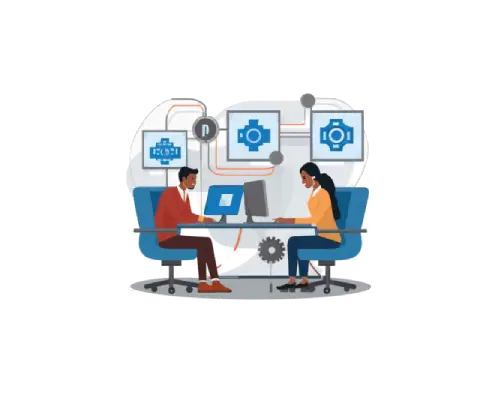In today’s fast-paced digital landscape, businesses are constantly evolving to stay competitive and relevant. Digital transformation has become more than just a buzzword; it’s a necessity for survival and growth. But what exactly does digital transformation encompass, and how can it benefit your organization? In this comprehensive guide, we’ll explore the four main areas of digital transformation, shedding light on the key aspects that can help your business thrive in the digital age.
1. Customer Experience Transformation
Enhancing the customer experience is at the core of digital transformation. With the rise of e-commerce, social media, and mobile apps, customers now expect a seamless and personalized interaction with businesses. To excel in this area, consider the following:
a. Omni-channel Engagement
Embrace multiple communication channels to interact with your customers. This includes social media, email, live chat, and traditional avenues like phone calls. Integration of these channels ensures a consistent customer experience, regardless of how they choose to engage with your brand.
b. Data-Driven Personalization
Leverage data analytics to understand your customers better. Personalize your products or services, marketing messages, and user experiences to cater to individual preferences and needs. This not only fosters loyalty but also drives higher conversion rates.
c. Automation and AI
Integrate automation and artificial intelligence into your customer service processes. Chatbots, virtual assistants, and predictive analytics can enhance efficiency and provide immediate, 24/7 customer support.
2. Operational Efficiency Transformation
Digital transformation can significantly improve the efficiency of your operations, ultimately reducing costs and improving productivity. Key areas to focus on include:
a. Process Optimization
Identify and streamline your business processes. Utilize workflow automation, project management software, and other digital tools to reduce manual tasks and human errors.
b. Cloud Computing
Move your infrastructure and data to the cloud. This enables easy scalability, remote access, and cost savings by eliminating the need for on-premises hardware.
c. Internet of Things (IoT)
Leverage IoT devices to monitor and control various aspects of your operations, such as supply chain, manufacturing, and equipment maintenance. IoT data can help in predictive maintenance, reducing downtime and costs.
3. Business Model Transformation
Traditional business models are rapidly becoming outdated. To stay relevant, organizations must adapt and transform their business models to meet modern demands. Consider these strategies:
a. Subscription-Based Models
Offer subscription services to your customers, providing them with continuous value. This model fosters recurring revenue and can lead to long-term customer relationships.
b. Platform Ecosystems
Create platform ecosystems that bring together various players in your industry. This encourages collaboration and innovation, enabling your organization to thrive in a networked environment.
c. Data Monetization
Unlock the value of your data by exploring data monetization opportunities. This can involve selling data to third parties, creating data-driven products, or using data analytics to inform strategic decisions.
4. Cultural Transformation
Digital transformation is not just about adopting new technologies; it’s also about fostering a cultural shift within your organization. Cultivate a digital-first mindset by focusing on the following:
a. Leadership Commitment
Leaders must champion the digital transformation process and lead by example. Their commitment sets the tone for the entire organization.
b. Employee Training
Invest in continuous training and development to ensure your workforce is proficient in digital tools and technologies. Empower your employees to adapt and innovate.
c. Collaboration and Innovation
Foster a culture of collaboration and innovation. Encourage cross-functional teams and embrace a fail-fast, learn-fast mentality to drive innovation.
Conclusion
Foster a culture of collaboration and innovation. Encourage cross-functional teams and embrace a fail-fast, learn-fast mentality to drive innovation.
In conclusion, digital transformation is not a one-size-fits-all concept, and it goes beyond just adopting the latest technology trends. It involves a holistic approach, addressing customer experience, operational efficiency, business models, and cultural transformation. By focusing on these four main areas, your organization can thrive in the digital age, stay ahead of the competition, and unlock new opportunities for growth and success. Embrace digital transformation as a journey, not a destination, and be prepared to adapt to the ever-evolving digital landscape.




